7 teams that create digital designers: yesterday, today, tomorrow
Last time, we figured out how a digital constructor is built in principle - how it has so many limitations, why they are important and how they help to teach children and adults the right things.

Today, without a dry theory - just take and look at digital designers who have gone the distance, feel great or are just starting up. We learn how the patterns of their distribution have changed and why a wave of automation is waiting for everything.
Do not deny yourself the pleasure to write about other interesting projects on the topic in the comments. Digital designers are cool and useful.
What is remarkable: artistic designers for the development of creative thinking in children and adults.
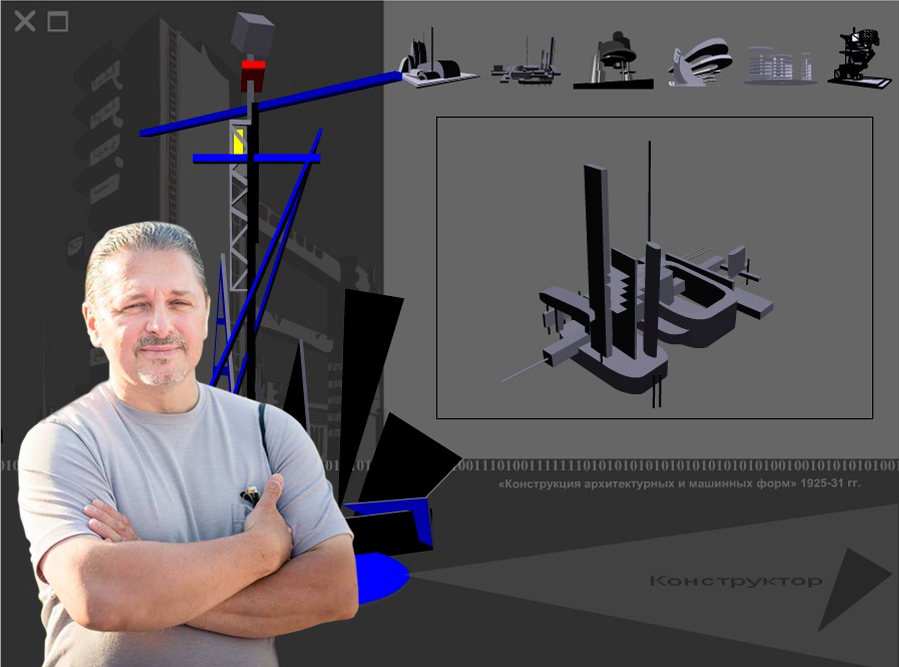
It seems the view that the designer is the “environment” for future radio-electronic engineers and programmers, prevails .
But in fact, the creative beginning is the same everywhere. And our first hero has living examples of how students from artists “change shoes” into developers.
Nikolai himself is an artist who has long been a keen IT subject. And his works are at the intersection of art and the possibilities of virtual experience.
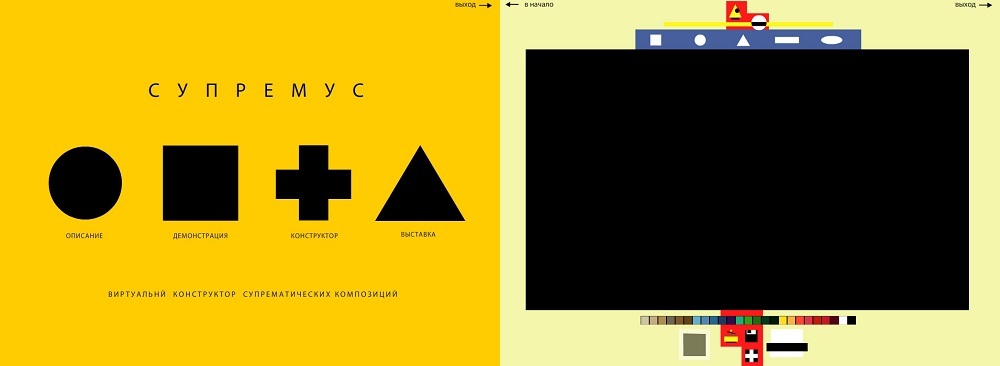
A few more works Selivanova hit this review on GT
Nikolai performed most of his projects in the 2000s, recorded on CD and distributed through customers (publishing houses, corporations, museum). But still on occasion he raises the web version on thematic events. However, to fully transfer designers to online, they need to switch from Flash to HTML5.
Where to touch: some designers are sold together with textbooks from fine arts or in museums. But it is better to come to the cultural center ZIL - there you can run any of his projects with Nikolai. Yes, and with the CD, that today is a kind of adventure.
What is remarkable: the neural network in the site builder.
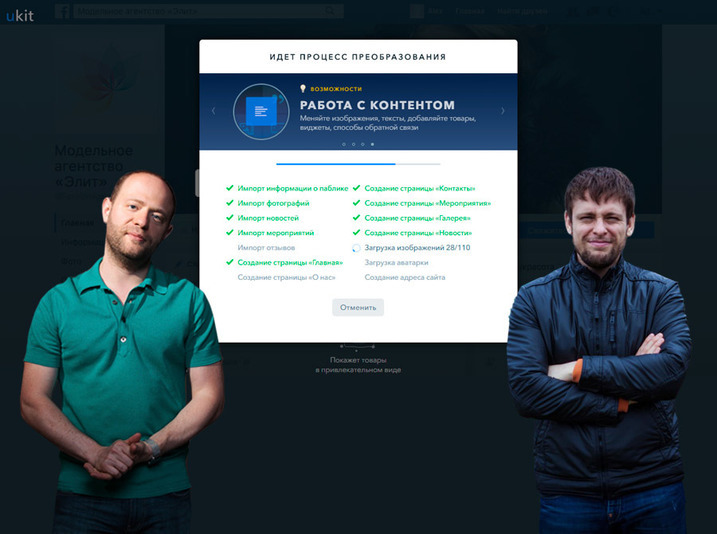
A year and a half ago, uCoz launched uKit, a simple visual designer of static business cards.
The next step in the development of the project was the automatic assembly of sites from the finished content - prototyping of key sections of the site from Facebook pages is already working : the information is decomposed into a template using a calibrated algorithm.
The plans include not only transfer from other platforms (it can be another social network, and an old site, as well as a combination of sources), but also an addition to the AI process.
The development of a self-learning add-in, which will rethink and rebuild old sites from different platforms on modern uKit templates, is headed by the Rostov CTO project Pavel Kudinov.

Coming soon ...
Where to touch: while the basic details of the project with the neural network are known . The designer himself , to whom she is hooked, works in three languages and supports over half a million sites. Try the online service for free.
What is remarkable: "CAD, which even a child can master."
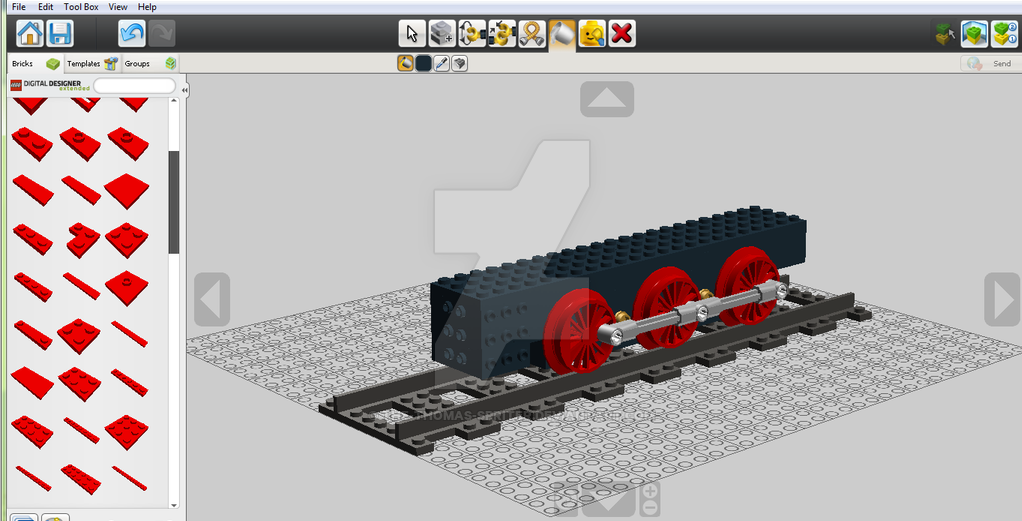
In the second half of the 2000s, the Lego Digital Designer (LDD) desktop application was submitted as part of a flirting program with customers: you could build a set of cubes on a computer, send the result of your work to the Lego website - and a set designed by an amateur, others bought under the brand the company.
In the early 2010s, the marketing campaign Design by Me closed, but the application created for it continued to develop and absorbed new worlds of the designer - in particular, Mindstorms.
However, the LDD project has recently been closed.
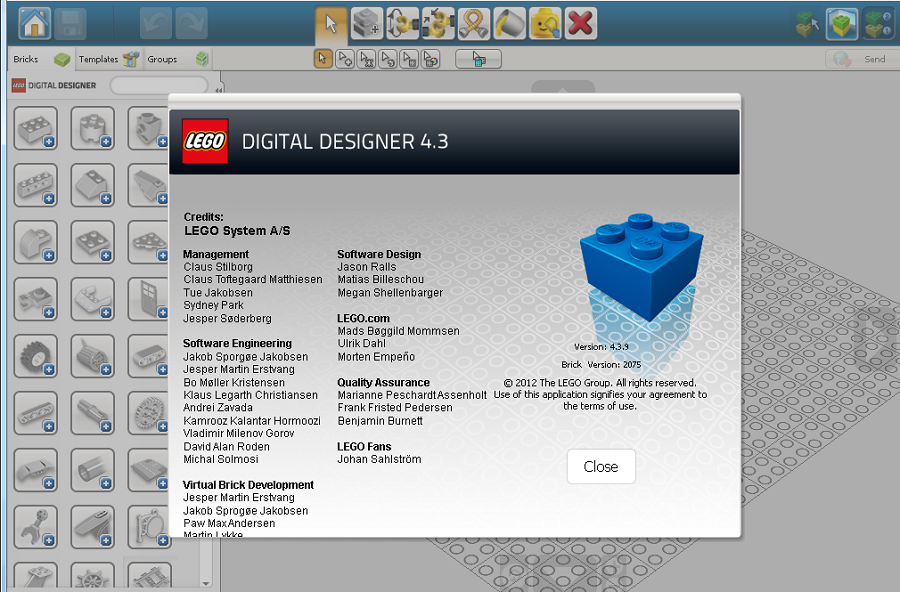
Above, you see the names of everyone who created the latest version of the project - and for the subtitle, we identified the names of the main engineers: they have a number of patentsLego in real-time rendering.
Another achievement of this team was the release of LDD for Mac OSX - for almost ten years the application has been available only to Windows users.
Where to touch: the application can be installed on a PC for free - and we hope that this possibility will exist for a long time. But experts say that if you don’t monetize a digital designer, you will have to close it over time.
The number of LDD installations is unknown. But the project’s key engineers participated in the creation of the LEGO Universe, a mass construction online game with two million users closed in 2012 due to problems with making a profit. Perhaps the following guys are indirectly to blame for its closure.
What is remarkable: Minecraft.
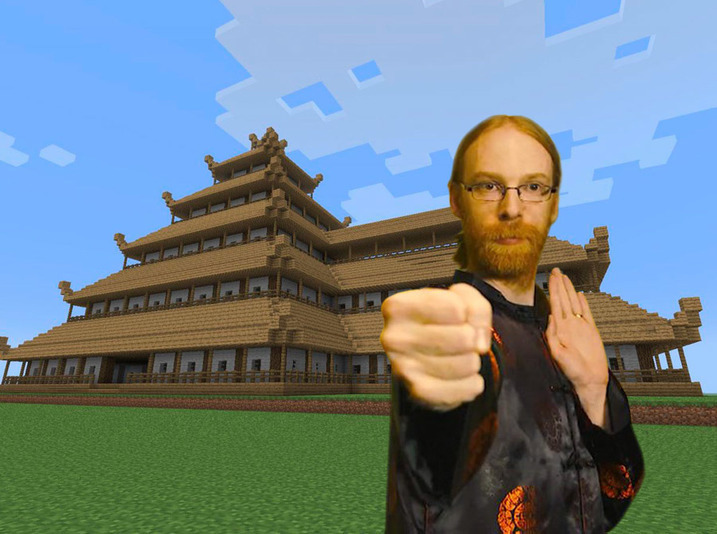
In 2012, Jens changed the author of the game - Marcus Persson - as the main developer of Minecraft.
With the participation of Bergenstena, the project got a “pocket” one - that is, a mobile version on iOS, Android and Windows Phone. And in the very first year of the stable release, the “pickpocket” overtook the PC version by the number of sales - 16.5 million mobile installations against 13 million on desktops (as of December 2013).

In April 2016, the game designer became available in the VR version, based on the “pocket” version.
Where to touch: in the helmet Oculus or Gear VR.
What is remarkable: this is the "adult" replacement of Lego Digital Designer.
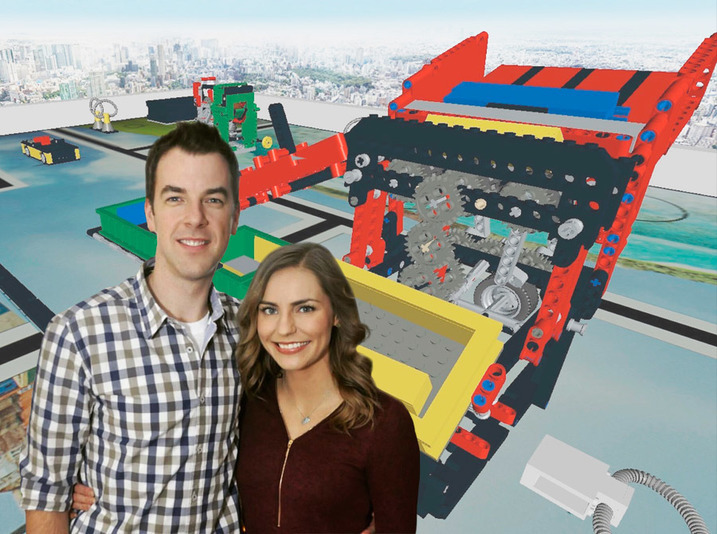
FYI: in the picture, only Shane and his wife
Software from two Cogmation Robotics employees not only allows you to build and program Mindstorms virtual robots, but also to virtually test their behavior taking into account the physics of our world. Moreover, it provides for the import of models from other programs - the same LDD.
Where to try: the program has no demo version. The developers site immediately offers to buy a license: for 1 person - for $ 50, or for a team - for 200.
What is remarkable: quadrocopters for children.

It was they who delivered the pizza by the copters, and if you saw drones racing on various kinds of pick-ups - that was them too. This year, the company presented a new project - “Klever”, a set for teaching students the basics of radio communication, microelectronics and programming in additional classes.
In addition to the physical part, the kit includes an environment for programming the flight of the copter - an extension to the Arduino and Raspberry Pi with the addition of its own libraries.
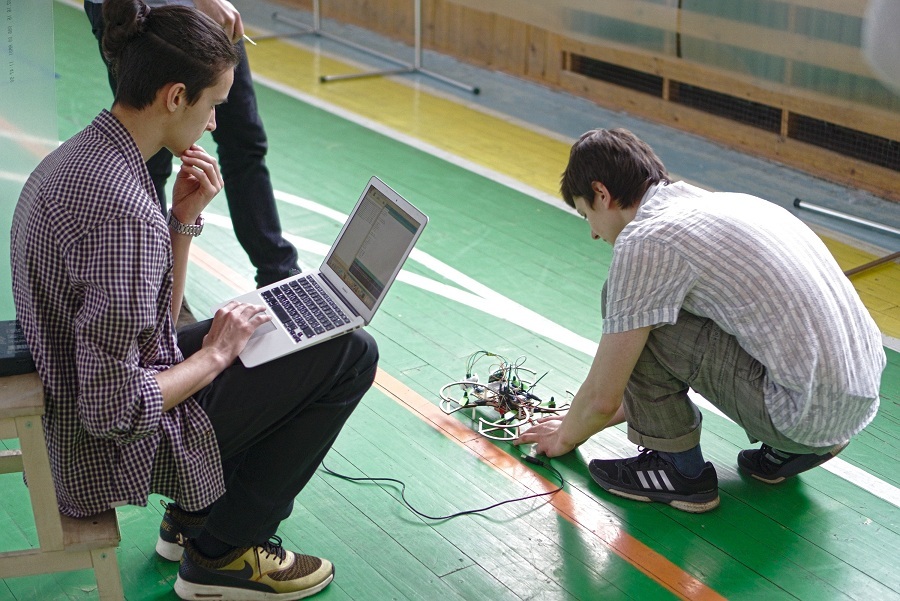
Where to touch: the set is designed for circles. Judging by the site of the project , three sections of the "Clover" are already open in Moscow - and there are also plans to launch more pairs: also in the capital.
What is remarkable: an attempt to create a "free designer like Lego, only in the style of MS Paint."

Your face when you have not filled out Credits in the project
Brazilian company Hypervisual has been in the web design market for about 20 years. Perhaps it was a side project of one of her employees or an attempt to enter a new market, but in the early 2000s she launched Blockworks.
You downloaded the installation file in 3Mb and opened something between the interface of MS Paint (some also called the designer “the version of Adobe Illustrator for children”) and the graphics in the style of the good old toys of the 1990s.
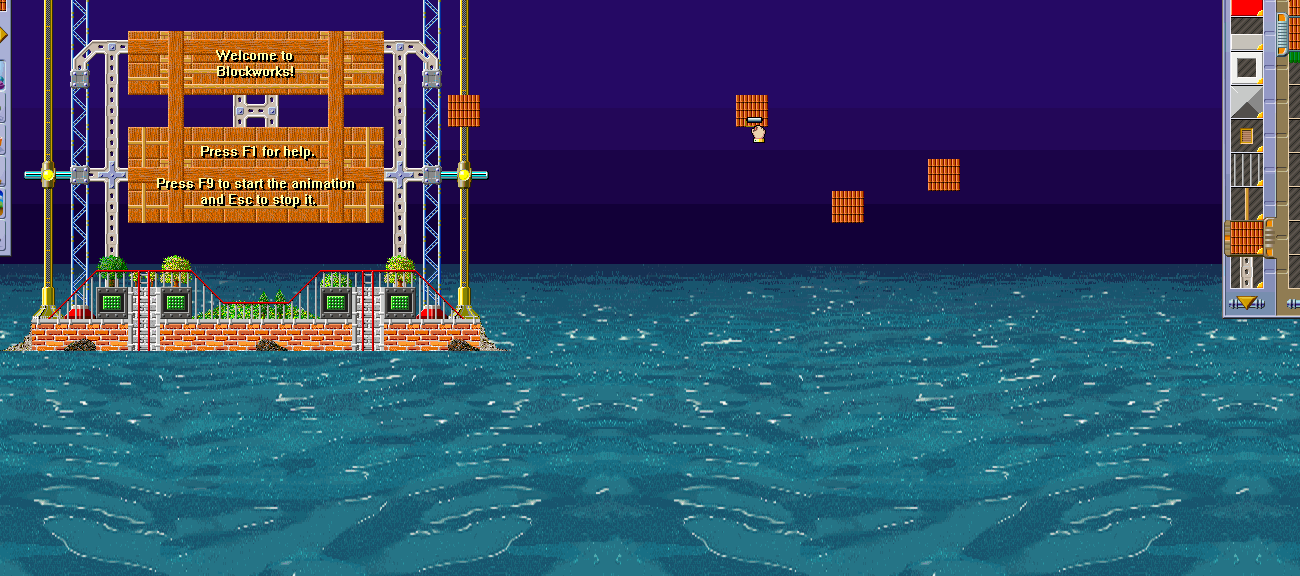
Further on the screen it was possible to arrange two-dimensional blocks, as well as to start the animation and sound series - as in Scratch , which appeared much later.
The application was positioned as a completely free digital designer for children, then the team switched to the “30-day free version” and licenses for mass use. But apparently, she stopped attempts to develop the project in the mid-2000s.
Where to touch: on the promo site you can still download a test copy for the Windows NT operating system family. According to indirect data, in 2006 the game designer was loaded almost 17 thousand times.
It seems that the project is simply not on time - partly too early, partly too late. His fragmentary history resembles the clues of the heroes of the series “Freeze and Burn,” who were trying to create their own Aliexpress before the Internet reached the Russian outback.
***
Thanks for attention. This article is a continuation of a series of materials on the use of designers in online and offline:
* How the digital designer works : basic principles
* Features of national designers: from Russia to Japan
* Features of national designers: from Scandinavia to the USA
* 8 useful designers and how to apply them in education

Today, without a dry theory - just take and look at digital designers who have gone the distance, feel great or are just starting up. We learn how the patterns of their distribution have changed and why a wave of automation is waiting for everything.
Do not deny yourself the pleasure to write about other interesting projects on the topic in the comments. Digital designers are cool and useful.
1. Nikolay Selivanov and "Workshop of artistic design"
What is remarkable: artistic designers for the development of creative thinking in children and adults.

It seems the view that the designer is the “environment” for future radio-electronic engineers and programmers, prevails .
But in fact, the creative beginning is the same everywhere. And our first hero has living examples of how students from artists “change shoes” into developers.
Nikolai himself is an artist who has long been a keen IT subject. And his works are at the intersection of art and the possibilities of virtual experience.

A few more works Selivanova hit this review on GT
Nikolai performed most of his projects in the 2000s, recorded on CD and distributed through customers (publishing houses, corporations, museum). But still on occasion he raises the web version on thematic events. However, to fully transfer designers to online, they need to switch from Flash to HTML5.
Where to touch: some designers are sold together with textbooks from fine arts or in museums. But it is better to come to the cultural center ZIL - there you can run any of his projects with Nikolai. Yes, and with the CD, that today is a kind of adventure.
2. Evgeny Kurt, Pavel Kudinov and uKit
What is remarkable: the neural network in the site builder.

A year and a half ago, uCoz launched uKit, a simple visual designer of static business cards.
The next step in the development of the project was the automatic assembly of sites from the finished content - prototyping of key sections of the site from Facebook pages is already working : the information is decomposed into a template using a calibrated algorithm.
The plans include not only transfer from other platforms (it can be another social network, and an old site, as well as a combination of sources), but also an addition to the AI process.
The development of a self-learning add-in, which will rethink and rebuild old sites from different platforms on modern uKit templates, is headed by the Rostov CTO project Pavel Kudinov.

Coming soon ...
Where to touch: while the basic details of the project with the neural network are known . The designer himself , to whom she is hooked, works in three languages and supports over half a million sites. Try the online service for free.
3. Jacob Jacobsen, Jesper Erstwang and the Lego Group
What is remarkable: "CAD, which even a child can master."

In the second half of the 2000s, the Lego Digital Designer (LDD) desktop application was submitted as part of a flirting program with customers: you could build a set of cubes on a computer, send the result of your work to the Lego website - and a set designed by an amateur, others bought under the brand the company.
In the early 2010s, the marketing campaign Design by Me closed, but the application created for it continued to develop and absorbed new worlds of the designer - in particular, Mindstorms.
However, the LDD project has recently been closed.

Above, you see the names of everyone who created the latest version of the project - and for the subtitle, we identified the names of the main engineers: they have a number of patentsLego in real-time rendering.
Another achievement of this team was the release of LDD for Mac OSX - for almost ten years the application has been available only to Windows users.
Where to touch: the application can be installed on a PC for free - and we hope that this possibility will exist for a long time. But experts say that if you don’t monetize a digital designer, you will have to close it over time.
The number of LDD installations is unknown. But the project’s key engineers participated in the creation of the LEGO Universe, a mass construction online game with two million users closed in 2012 due to problems with making a profit. Perhaps the following guys are indirectly to blame for its closure.
4. Jens Bergensten and the team of Mojang AB
What is remarkable: Minecraft.

In 2012, Jens changed the author of the game - Marcus Persson - as the main developer of Minecraft.
With the participation of Bergenstena, the project got a “pocket” one - that is, a mobile version on iOS, Android and Windows Phone. And in the very first year of the stable release, the “pickpocket” overtook the PC version by the number of sales - 16.5 million mobile installations against 13 million on desktops (as of December 2013).

In April 2016, the game designer became available in the VR version, based on the “pocket” version.
Where to touch: in the helmet Oculus or Gear VR.
5. Shane Yankee, Eric Himbo and the Virtual Robotics Toolkit
What is remarkable: this is the "adult" replacement of Lego Digital Designer.

FYI: in the picture, only Shane and his wife
Software from two Cogmation Robotics employees not only allows you to build and program Mindstorms virtual robots, but also to virtually test their behavior taking into account the physics of our world. Moreover, it provides for the import of models from other programs - the same LDD.
Where to try: the program has no demo version. The developers site immediately offers to buy a license: for 1 person - for $ 50, or for a team - for 200.
6. Oleg Ponfilenok and Copter Express
What is remarkable: quadrocopters for children.

It was they who delivered the pizza by the copters, and if you saw drones racing on various kinds of pick-ups - that was them too. This year, the company presented a new project - “Klever”, a set for teaching students the basics of radio communication, microelectronics and programming in additional classes.
In addition to the physical part, the kit includes an environment for programming the flight of the copter - an extension to the Arduino and Raspberry Pi with the addition of its own libraries.

Where to touch: the set is designed for circles. Judging by the site of the project , three sections of the "Clover" are already open in Moscow - and there are also plans to launch more pairs: also in the capital.
7. Blockworks and unknowns
What is remarkable: an attempt to create a "free designer like Lego, only in the style of MS Paint."

Your face when you have not filled out Credits in the project
Brazilian company Hypervisual has been in the web design market for about 20 years. Perhaps it was a side project of one of her employees or an attempt to enter a new market, but in the early 2000s she launched Blockworks.
You downloaded the installation file in 3Mb and opened something between the interface of MS Paint (some also called the designer “the version of Adobe Illustrator for children”) and the graphics in the style of the good old toys of the 1990s.

Further on the screen it was possible to arrange two-dimensional blocks, as well as to start the animation and sound series - as in Scratch , which appeared much later.
The application was positioned as a completely free digital designer for children, then the team switched to the “30-day free version” and licenses for mass use. But apparently, she stopped attempts to develop the project in the mid-2000s.
Where to touch: on the promo site you can still download a test copy for the Windows NT operating system family. According to indirect data, in 2006 the game designer was loaded almost 17 thousand times.
It seems that the project is simply not on time - partly too early, partly too late. His fragmentary history resembles the clues of the heroes of the series “Freeze and Burn,” who were trying to create their own Aliexpress before the Internet reached the Russian outback.
***
Thanks for attention. This article is a continuation of a series of materials on the use of designers in online and offline:
* How the digital designer works : basic principles
* Features of national designers: from Russia to Japan
* Features of national designers: from Scandinavia to the USA
* 8 useful designers and how to apply them in education
